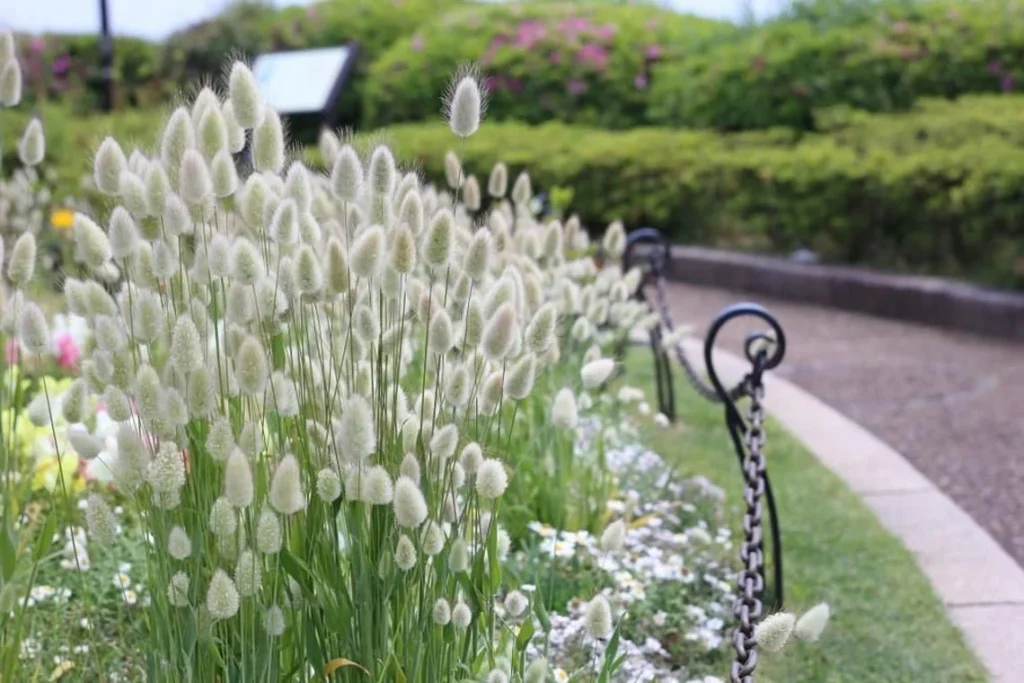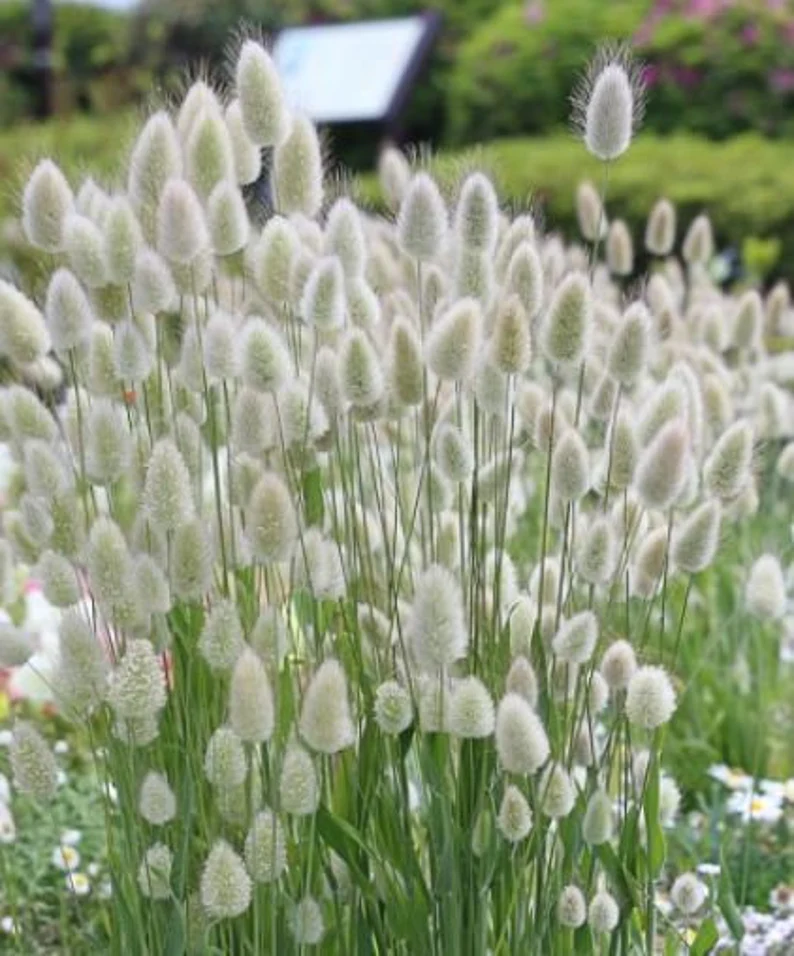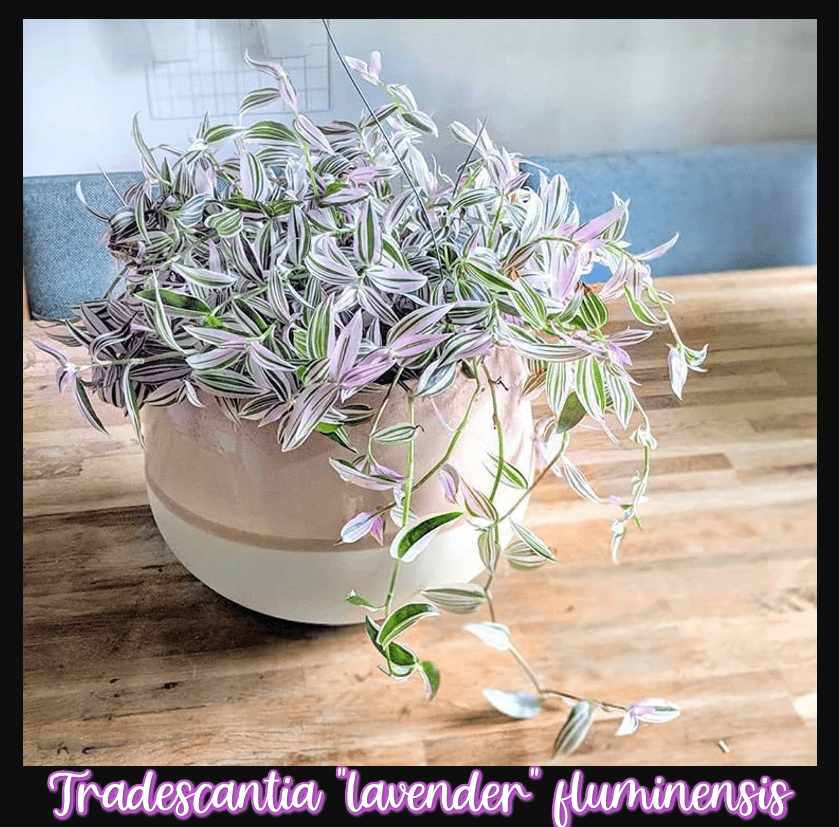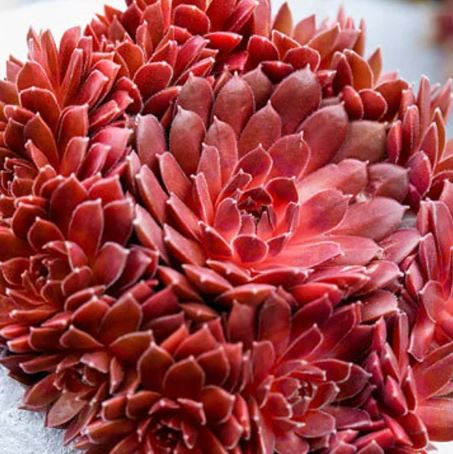What Is Bunny Tails Grass?

White bunny tails grass, also known as Lagurus Ovatus, is an ornamental grass that is known for its unique, fluffy white seed heads that resemble the tails of bunnies. It is native to Mediterranean regions and is a popular choice for gardens and landscaping due to its low maintenance and delicate appearance.
In conclusion, white bunny tails grass is a unique and attractive ornamental grass that is easy to grow and maintain, making it a popular choice for gardeners and landscapers alike.
Dimensions
Typically grows to a height of 15-30 cm (6-12 inches) and a width of 20-30 cm (8-12 inches). The leaves are slender and green, growing to a length of 20-30 cm (8-12 inches). The seed heads, which are the signature feature of the plant, are fluffy and white, growing to a length of 2-5 cm (1-2 inches) and a width of 1-2 cm (0.5-1 inch). These seed heads form in late summer and persist through the fall, adding texture and interest to garden beds and arrangements.
Zones
This grass is hardy and can grow in a range of climates, but it is typically best suited to USDA hardiness zones 7 to 10. The plant can withstand average winter temperatures of 0°F to 40°F.
Cooler climates, the plant may not survive the winter and should be treated as an annual. In warmer climates, it may continue to grow year-round, although some gardeners may choose to cut it back in the winter to promote fresh growth in the spring.
It’s important to note that while the white bunny tails grass is relatively hardy, it still prefers a well-drained soil and full sun to partial shade. In addition, it may be susceptible to damage from heavy frost, strong winds, and prolonged periods of drought.
It is always best to check your local climate and growing conditions to determine whether white bunny tails grass will thrive in your area. Hare’s tail grass is easy to grow from seed.
All About Lagurus Ovatus
Lagurus ovatus, commonly known as Bunny Tail Grass or Hare’s Tail Grass, is a small ornamental grass species that belongs to the Poaceae family. Native to Mediterranean regions and parts of Europe, this grass has become popular in gardening and landscaping due to its unique appearance and texture.

Here are some key characteristics and information about Lagurus ovatus:
- Appearance: Bunny Tail Grass is characterized by its distinctive fluffy, soft, and cylindrical flower heads that resemble the tails of rabbits or hares, hence its common name. The flower heads are typically white or cream-colored, and they form dense clusters atop slender stems.
- Size: The grass typically grows to a height of around 12 to 18 inches (30 to 45 cm) and spreads to form small clumps.
- Foliage: The grass produces linear, green leaves that are relatively inconspicuous compared to the eye-catching flower heads.
- Flowering: Bunny Tail Grass blooms during late spring to early summer, producing its fluffy flower heads that persist into summer. The flowers gradually dry out and maintain their unique appearance even after they’ve finished blooming.
- Cultivation: Lagurus ovatus is relatively easy to cultivate. It prefers full sun but can tolerate partial shade. It’s adaptable to various soil types as long as they’re well-draining. This grass is often used in beds, borders, containers, and even as a cut flower for arrangements.
- Propagation: You can propagate Bunny Tail Grass from seeds. Sow the seeds directly into the soil in the spring or fall. They usually germinate within a couple of weeks under proper conditions.
- Care: Once established, Bunny Tail Grass requires minimal maintenance. Regular watering during its initial growth phase is beneficial, but it can tolerate drought conditions once mature. Since it’s a relatively short-lived perennial, it’s often treated as an annual or biennial in colder climates.
- Uses: Bunny Tail Grass is popular in ornamental gardening due to its soft and whimsical appearance. It adds texture and interest to flower beds, borders, and rock gardens. Additionally, it’s a great choice for dried flower arrangements due to the long-lasting, fluffy flower heads.
- Hardiness: Lagurus ovatus is often grown as an annual in regions with colder climates. It is more likely to survive as a perennial in milder climates, USDA hardiness zones 9 to 11.
- Potential Concerns: While not particularly invasive, Bunny Tail Grass can self-seed and naturalize in certain conditions. To prevent unwanted spreading, you can deadhead the flowers before they go to seed.
Bunny Tail Grass is a delightful and charming addition to gardens and landscapes, offering a touch of whimsy and a unique texture that appeals to many gardeners and decorators.

Is Bunny Tail Grass Invasive?
Bunny Tail Grass (Lagurus ovatus) is generally not considered invasive in the same way that some other plants are. It doesn’t aggressively spread and take over natural ecosystems in the same manner that true invasive species do. However, it’s important to note that under certain conditions, Bunny Tail Grass can self-seed and establish itself in areas where it wasn’t originally planted.
The self-seeding nature of Bunny Tail Grass means that its seeds can be carried by wind or animals to new areas, leading to the growth of new plants. While this can create a naturalized and charming look in gardens and landscapes, it might become a concern in sensitive or protected ecosystems where non-native species are not desired.
To prevent Bunny Tail Grass from becoming a potential problem, you can take a few steps:
- Deadheading: Remove the flower heads before they go to seed. This prevents the plant from self-seeding and spreading.
- Controlled Planting: If you’re concerned about self-seeding, consider growing Bunny Tail Grass in containers or designated garden areas where you can manage its growth more effectively.
- Regular Monitoring: Keep an eye on your garden to ensure that any self-seeded plants are promptly removed if they start growing in unwanted areas.
- Local Regulations: Be aware of any local regulations or guidelines regarding the planting of non-native species. Some regions may have restrictions on certain plants to prevent ecological disruption.
In summary, while Bunny Tail Grass is not highly invasive, it’s a good practice to manage its growth to prevent unintended spread in sensitive ecosystems or areas where it’s not desired.
Caring for Bunny Tail Grass:
Inside
Can be grown indoors as an ornamental plant, although it is more commonly grown outdoors. If you would like to grow this plant inside, here are some tips for caring for it:
- Light: White bunny tails grass prefers full sun to partial shade, but it can be grown indoors in a sunny window or under artificial light. Make sure to provide bright, indirect light for best results.
- Watering: This plant prefers well-drained soil and should not be kept too moist. Water the plant thoroughly when the top inch of soil feels dry to the touch, and be sure to empty any water that collects in the bottom of the pot.
- Soil: Use a well-draining potting mix and a pot with drainage holes to prevent root rot.
- Fertilizing: White bunny tails grass is a low-maintenance plant and does not require frequent fertilization. However, you can feed it with a balanced fertilizer every 2-3 months during the growing season to promote healthy growth.
- Pruning: Cut back any yellow or dead foliage regularly to keep the plant looking its best. You can also cut back the entire plant in the spring to promote fresh growth.
- Pests: This plant is relatively resistant to pests, but it may be susceptible to spider mites and other indoor pests in some cases. Regularly inspecting the plant and treating any pests as needed can help prevent infestations.
By following these tips, you can grow a healthy and attractive white bunny tails grass plant indoors.
Outside
An attractive and low-maintenance ornamental grass that is well-suited to outdoor gardens and landscaping. Here are some tips for caring for it outside:
- Light: White bunny tails grass prefers full sun to partial shade, so choose a location that receives at least 4-6 hours of direct sunlight each day.
- Soil: This plant prefers well-drained soil, so choose a location that does not become waterlogged after heavy rain. It can tolerate a range of soils, from well-drained to dry and poor.
- Watering: White bunny tails grass is drought-tolerant and does not require frequent watering. Water the plant thoroughly when the top inch of soil feels dry to the touch, and avoid overwatering.
- Fertilizing: This plant is low-maintenance and does not require frequent fertilization. However, you can feed it with a balanced fertilizer every 2-3 months during the growing season to promote healthy growth.
- Pruning: Cut back any yellow or dead foliage regularly to keep the plant looking its best. You can also cut back the entire plant in the spring to promote fresh growth.
- Pests: White bunny tails grass is relatively resistant to pests, but it may be susceptible to fungal diseases in wet, humid conditions. Regularly inspecting the plant and treating any pests or diseases as needed can help prevent problems.
By following these tips, you can grow a healthy and attractive white bunny tails grass plant outside.

Is Bunny Tail Grass A Perennial?
Bunny Tail Grass (Lagurus ovatus) is typically considered a short-lived perennial or an annual, depending on the climate and growing conditions.
In milder climates with warmer winters (USDA hardiness zones 9 to 11), Bunny Tail Grass can behave as a perennial, meaning it may come back and continue to grow for multiple years. However, even in these zones, it’s not necessarily a long-lived perennial and might only persist for a few years.
In colder climates (zones lower than 9), Bunny Tail Grass is often grown as an annual. This means that it completes its lifecycle within a single growing season and does not survive the winter. Gardeners in these regions will need to replant it each year.
Keep in mind that Bunny Tail Grass is often appreciated for its unique and fluffy flower heads, making it a popular choice for ornamental gardens and dried flower arrangements. Whether grown as an annual or a short-lived perennial, it can still add charm and visual interest to your garden or landscape.
Does Bunny Tail Grass Seed?
Yes, Bunny Tail Grass (Lagurus ovatus) produces seeds as part of its reproductive cycle. The distinctive fluffy flower heads of Bunny Tail Grass are actually clusters of seeds that are attached to fine stems. As the flower heads mature and dry out, the seeds become more visible and develop their characteristic fluffy appearance, resembling bunny tails or hare’s tails.
These seeds can be released from the flower heads and can be carried by the wind or other means to nearby areas. This natural dispersal mechanism allows Bunny Tail Grass to reproduce and spread. If you want to prevent the grass from self-seeding and spreading, you can deadhead the flower heads before they fully dry out and release their seeds. Removing the spent flowers can help control the plant’s reseeding and keep its growth in check.
How To Dye Bunny Tails Grass
Dyeing Bunny Tail Grass can be a fun and creative way to add color to your floral arrangements and crafts. Here’s a general guide on how to dye Bunny Tail Grass:

Materials You’ll Need:
- Bunny Tail Grass (harvested and dried)
- Fabric dye or food coloring (liquid or powder)
- Water
- Containers for dyeing (glass jars, plastic containers, etc.)
- Plastic gloves
- Protective clothing (to avoid staining)

Steps:
- Prepare the Bunny Tail Grass:
- Harvest Bunny Tail Grass when it’s at its peak and fully developed.
- Trim the stems to the desired length for your project.
- Gently shake the flower heads to remove any loose seeds or debris.
- Mix the Dye:
- Follow the instructions on the fabric dye or food coloring packaging to create the dye solution.
- Generally, you’ll mix the dye with water according to the recommended ratios. The amount of dye you use will affect the intensity of the color.
- Dye the Bunny Tail Grass:
- Fill the containers with the dye solution. You can use separate containers for different colors if you’re dyeing multiple batches.
- Wear plastic gloves and protective clothing to prevent staining your skin and clothes.
- Submerge the Bunny Tail Grass into the dye solution. You can fully immerse the stems or partially dip them, depending on the effect you want.
- Gently swish the stems around to ensure even dye coverage.
- Soak and Monitor:
- Allow the Bunny Tail Grass to soak in the dye solution for a period of time. The length of time will depend on the desired color intensity. You might need to experiment with different soaking times to achieve your desired result.
- Periodically check the color of the Bunny Tail Grass by removing a stem and rinsing it under cold water. The color will appear darker when wet.
- Rinse and Dry:
- Once you’re satisfied with the color, remove the Bunny Tail Grass from the dye solution.
- Rinse the stems under cold water to remove excess dye.
- Gently shake off any excess water and arrange the dyed Bunny Tail Grass on paper towels or a drying rack to air dry.
- Display and Use:
- Once the Bunny Tail Grass is dry, it’s ready to use in your floral arrangements, crafts, or decorations.
- Remember that dyed Bunny Tail Grass may have a different texture and appearance compared to its natural color, so consider this when incorporating it into your projects.
Keep in mind that the color intensity and final result can vary based on factors such as the type of dye used, the concentration of the dye solution, and the natural color of the Bunny Tail Grass. Experimenting with different dyeing techniques can lead to unique and visually appealing outcomes.
How to Purchase
You can buy this majestic grass at our Esty shop. Happy shopping
Looking for more?
https://www.pinterest.com/pin/602004675216193642/Bunny Tail Grass (Lagurus ovatus) is generally not considered invasive in the same way that some other plants are. It doesn’t aggressively spread and take over natural ecosystems in the same manner that true invasive species do.
Bunny Tail Grass (Lagurus ovatus) is typically considered a short-lived perennial or an annual, depending on the climate and growing conditions.
Yes, Bunny Tail Grass (Lagurus ovatus) produces seeds as part of its reproductive cycle. The distinctive fluffy flower heads of Bunny Tail Grass are actually clusters of seeds that are attached to fine stems.





